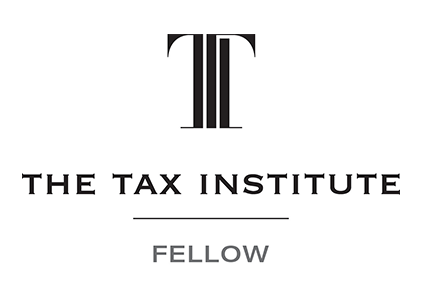
An “integrity” measure, which aimed to stop SMSF trustees from manipulating their total superannuation balance in order to keep below the $1.6 million threshold, may have the unintended outcome of reducing the appeal of LRBAs.
Legislated changes to limited recourse borrowing arrangements (LRBAs) in regard to calculating an SMSF member’s total superannuation balance (TSB) amends quite recently introduced rules so that the TSB calculation may or may not (depending on meeting certain conditions) be required to include the outstanding amount of the fund’s LRBA loan.
The previous measure that the new legislation amends, which was introduced with the 2017-18 federal budget, had the aim of preventing SMSF members from manipulating their TSB to keep it below the $1.6 million threshold.
The amount of TSB is an important factor, as the rules state that a TSB as at June 30 of a previous year will determine eligibility to several concessions written into the SMSF landscape — such as being able to make non-concessional contributions, access to tax offsets, using the segregated assets method in calculating exempt-current pension income, and being able to use the unused concessional contributions cap carry-forward rules.
The proposed changes (the legislation is still in the Senate at the time of writing) are to apply from July 1, 2018, and propose to include a member’s share of the outstanding value to an LRBA in their TSB at a particular June 30 where:
- the LRBA loan is a related party loan, or
- the member has met a condition of release with nil cashing restrictions (such as retirement, turning 65 or a terminal medical condition).
Affected funds will be required to proportion any outstanding LRBA loan balance between members to calculate each one’s TSB. Importantly, it will pay to remember that if the lender is not a related party, the calculation will only apply to members who have met a full condition of release. Otherwise the new rule applies to all members with interests supported by assets that come under the LRBA.
The new legislation will capture any new LRBA for members who meet a full condition of release (and remember, every member will do so at some stage). This means they will be required to include their share of the outstanding balance of any new LRBA taken out after July 1, 2018 in their TSB on June 30. Indeed, should the proposal become law, some members will find they may need to wind up their LRBA if they wish to continue to make more non-concessional contributions to their fund should the LRBA balance cause them to exceed the $1.6 million limit.
The following questions and answers may clear up further considerations for the funding of SMSF assets post July 1, 2018.
Q. For fund members under 65 years of age in accumulation phase, when will the debt for a post June 30, 2018 LRBA affect their TSB, which may therefore have an affect on an individual’s (non-concessional) contributions cap?
Answer
Where the LRBA lender is an arm’s length party, such as a bank, their share of the outstanding LRBA debt will only count towards their total superannuation balance (TSB) and therefore have the potential to affect their non-concessional contributions cap when the fund member attains 65 years of age or satisfies another condition of release with nil cashing restrictions.
Where, however, the LRBA lender is a related party or an associate, then the LRBA debt will immediately count towards the fund member’s TSB, potentially affecting the permitted level of the LRBA debt and the ability of the fund member to make further non-concessional contributions.As a result, we are still likely to see related party lenders in LRBAs where the fund members’ account balances and LRBA debt are not sufficiently high enough to be affected by the contribution caps.
Q. If the rate of interest for a pre-July 1, 2018 LRBA has been zero or less than commercial rates in the past, what are the implications for the SMSF post-June 30, 2018?
Answer
The income deemed to have been generated from the interest payments foregone will be taxed as non-arm’s length income under the rules, and at a flat rate of 45%.
Q. SMSFs are permitted to invest in fixed unit trusts that meet the requirements of the regulations. To what extent are fixed unit trusts a substitute for an LRBA?
Answer
The reasons why LRBAs largely replaced regulated fixed unit trusts following the advent of LRBAs in 2007 are also the reasons why they are a very limited substitute for LRBAs. The trustees of fixed unit trusts are subject to borrowing restrictions, and can only hold ungeared real estate and cash as trust assets. Non-SMSF unitholders in such fixed unit trusts can borrow in their capacity as unitholders, but cannot use the trust property as security for their borrowings.
Q. If the unit trust in which the trustee of an SMSF has invested turns out to be a non-fixed unit trust, for example units can be issued or transferred at nominal values, what are the taxation implications for the SMSF?
Answer
As a non-fixed, hybrid or discretionary unit trust is not a permitted investment for the unit trust, income generated will be taxed as non-arm’s length income at a flat rate of 45%.
Q. Are there other trust alternatives for SMSFs to regulated fixed unit trusts?
Answer
Yes there are. A private fixed unit trust in which an SMSF, together with the fund members personally and their associates, does not hold a controlling interest, is not subject to the borrowing restrictions; nor is the debt of such a fixed unit trust counted as an asset for contributions cap purposes. An example of such a fixed unit trust is a unit trust with the trustees of two SMSFs not associated with each other each holding 50% of the units, neither holding casting votes.The challenges with these trusts are first finding compatible non-associated investors and second dealing with the situation where only one investor wishes to exit from the fixed unit trust.
Tax Store Accountants Hoppers Crossing.
Our Management Credentials




